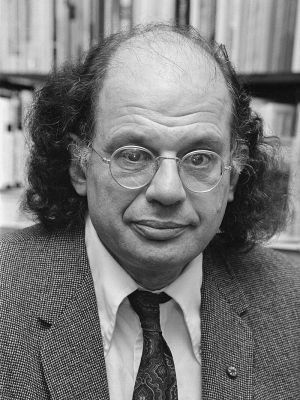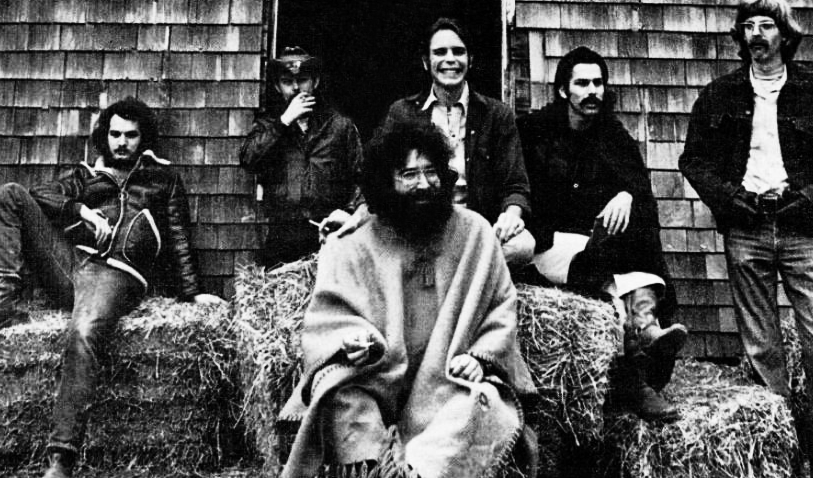Jefferson Airplane featured on the cover of Cash Box magazine, 29 July 1967.
The 1960s Hippie movement emerged as a defining cultural shift that significantly influenced American society and beyond. Originating as a youth subculture in the United States during the early part of the decade, the movement epitomized a radical break with mainstream values, embracing alternative lifestyles and questioning established institutions. Hippies, the members of this counterculture, were known for their unconventional appearance, communal living, and a strong inclination towards peace, love, and personal freedom.
This movement was characterized not just by its distinctive sartorial choices, such as bell-bottom jeans and vibrant tie-dyed shirts, but also by its profound connection to music, art, and literature that reflected its ideals. The hippies’ beliefs were rooted in ideals of harmony with nature, an openness to Eastern religions, and an opposition to the Vietnam War. Those involved in the movement sought to create a society that valued collective well-being over individual success, challenging the materialism and consumerism prevalent at the time.
As a cultural movement, the influence of the hippie ethos extended into various realms including political activism, the emergence of new religious movements, sexual liberation, and drug use. In their heyday, hippies congregated in places symbolic of their countercultural values, notably San Francisco’s Haight-Ashbury district and New York City’s Greenwich Village. The legacy of the 1960s hippie movement is evident in the subsequent evolution of social norms and values, particularly in the realm of personal expression and civil liberties.
Origins and Philosophy
The 1960s Hippie movement was a transformative era marked by a dramatic shift in social norms and cultural values. Originating as a reaction to conservative mainstream society, the movement embraced an alternative lifestyle that valued peace, love, and personal freedom.
Influences from Beat Generation
The foundations of the Hippie movement can be traced back to the Beat Generation of the 1950s. Beatniks, as they were sometimes called, laid the groundwork with their literary works and bohemian lifestyle. Notable figures such as Allen Ginsberg and Jack Kerouac challenged conventional society through bold expressions of personal freedom and anti-materialism. Their writings and poetry underscored the critical perspective on the mechanization and conformity of society, advocating instead for spontaneity, spiritual exploration, and open artistic expression.
- Key figures: Allen Ginsberg, Jack Kerouac

- Main concepts: Anti-materialism, spiritual exploration, artistic expression
- Literary works: “Howl” (Ginsberg), “On the Road” (Kerouac)
Emergence of Flower Children
By the early 1960s, the Beat Generation’s influence had evolved into the emergence of the Flower Children. Embodying ideals of the civil rights movement and free love, these individuals were distinguished by their colorful clothing, long hair, and peaceful demeanor. The Flower Children sought a society built on egalitarian principles and were often seen as the symbolic representation of the counterculture movement.
They fervently opposed the Vietnam War, rallying for peace and demonstrating their commitment to non-violent principles. This subgroup of the Hippie movement emphasized an ethos of love over war and communal living over individualistic pursuits.
- Beliefs: Non-violence, communal living, egalitarianism
- Practices: Peaceful protests, communes, artistic expression
Key Events and Figures
The hippie movement of the 1960s was marked by pivotal events and influential personalities that shaped the cultural and social landscape of the era. These milestones and figures were at the heart of the movement’s quest for peace, love, and an alternative lifestyle.
Summer of Love
In 1967, the Summer of Love became the defining moment of the hippie movement, drawing nearly 100,000 people to the Haight-Ashbury neighborhood of San Francisco. This collective experience emphasized communal living, artistic expression, and the widespread use of psychedelic drugs.
Woodstock Festival
The Woodstock Festival, which took place in August 1969 near New York, is often viewed as the culmination of the hippie movement. Over three days, an estimated 400,000 attendees gathered to witness performances by iconic musicians, fortifying Woodstock’s legacy as a symbol of peace and music.
Prominent Faces of the Movement
The movement brought several key figures to the forefront of popular culture.
- Jimi Hendrix: A legendary guitarist whose innovative style became emblematic of the era’s music.
- Janis Joplin: Influential rock and blues singer known for her raw and powerful performances.
- Grateful Dead: A band that emerged from the San Francisco scene, becoming an integral part of the hippie identity.

- Jefferson Airplane: Another San Francisco-based band that gained fame with their hit single “White Rabbit” and performances at major events like Woodstock.
Cultural and Social Impact
The Hippie movement had a tangible effect on culture, particularly through fashion and music, as well as its influence on arts and media. It was a testament to their impact that both these avenues would continue to reflect hippie ideals long after the 1960s.
Fashion and Music
Fashion: The Hippie movement brought an eclectic mix of clothing styles to the forefront, featuring vibrant colors, tie-dye patterns, and floral designs that became synonymous with the era. Clothing was used as an expression of individuality and rebellion against the conventional. Bell-bottoms, peasant blouses, and headbands were not merely items of clothing but statements of nonconformity.
| Iconic Fashion Items | Description |
|---|---|
| Tie-dye shirts | Emblematic of DIY culture and self-expression |
| Bell-bottom jeans | A staple for both men and women in Hippie culture |
| Peasant blouses | Loose, flowing tops that signaled relaxed norms |
| Headbands | Worn as a sign of peace and in solidarity |
Music: A pivotal component of the Hippie Movement was music, acting both as a catalyst for change and as a vehicle of their countercultural message. Rock music, with legendary bands such as The Beatles and The Rolling Stones, was at the heart of this. They helped popularize psychedelic rock and gave a voice to the sentiments of the movement.
- The Beatles: Their evolution from pop icons to experimental musicians with albums like “Sgt. Pepper’s Lonely Hearts Club Band” mirrored the social changes of the times.
- The Rolling Stones: They captured the more rebellious streak with songs like “Sympathy for the Devil” and “Street Fighting Man.”
Arts and Media Influence
The hippie counterculture left its mark on the arts and media by challenging traditional narratives and promoting alternative lifestyles. Their ethos permeated into film and television, which began to explore and sometimes endorse themes of anti-establishment, peace, and love.
Film: The industry saw an uptick in movies that addressed taboo subjects, defied censorship, and portrayed alternative ways of living that were directly influenced by hippie culture. For example, “Easy Rider” (1969) became a cult classic, encapsulating the essence of hippie ideology.
Television: While more conservative compared to film, television in the late 1960s began to reflect some of the changing norms, with shows subtly introducing countercultural ideas and more liberated characters, pushing the boundaries of what was acceptable on the small screen.
Arts: Visual arts were not left untouched by the Hippie movement, as exemplified through psychedelic posters and album covers that became cultural icons. The movement also saw a resurgence in handcrafted goods, from jewelry to pottery, promoting the value of individual artisanal skills over mass-produced goods. These art forms were instrumental in broadcasting the messages and sentiments of the movement to a wider audience.
Political Activism
The political activism of the 1960s Hippie movement saw its most notable expressions in vehement opposition to the Vietnam War and in staunch support for civil rights. Their strategies emphasized peaceful protest and embodied a departure from established societal norms.
Anti-War Protests and Civil Rights
During the Vietnam War, the Hippie movement’s anti-war sentiment coalesced around a philosophy of nonviolence and a rallying cry for peace. They organized numerous protests, with one of the most emblematic being the 1967 March on the Pentagon, where tens of thousands of protesters voiced their opposition to the war. Central to their protest was the cultural idea that love could be a transformative force more powerful than any weapon.
The Hippie movement also actively intersected with the Civil Rights Movement, supporting equality and integration. They aligned with African American civil rights leaders and initiatives, participating in sit-ins, freedom rides, and marches such as the 1963 March on Washington, highlighting the overlapping ideologies of peace, love, and equality.
Notable Political Events
- The Summer of Love (1967): Marked a pinnacle of Hippie cultural impact, bringing the anti-establishment message to the forefront in Haight-Ashbury, San Francisco.
- Democratic National Convention (1968): Protestors, including members of the Youth International Party (Yippies), gathered in Chicago to demonstrate against the political status quo, leading to a violent clash with police.
The Yippies, among the more politically active subgroups, sought not only cultural but also political revolution. They employed theatrics and satire to protest against societal norms and stand up for a range of progressive causes, entwining political activism with a certain exuberance that became a signature of the wider Hippie movement’s approach to social and political change.
Legacy and Continuities
The Hippie movement left a profound impact on society, from establishing alternative communities to influencing modern attitudes towards environmentalism and personal freedom. The movement’s use of drugs as exploration and protest tools echoes in today’s discourse on drug policies.
Influence on Modern Subcultures
Modern subcultures owe a debt to the Hippie movement, with communes and communal living continuing as a variant of lifestyle choice. These practices are not merely historical artifacts but live on in various forms. For example, the burner culture, which organizes events like Burning Man, mirrors the Hippie’s quest for community and radical self-expression. The rise of eco-villages also reflects the Hippie emphasis on sustainable living and environmental responsibility.
The Hippie movement’s approach to narcotics, particularly the recreational use of marijuana and hallucinogenic drugs like LSD, has influenced modern perspectives on drug use and legalization efforts. While controversial and much debated, these substances, which were emblematic of Hippie culture, have since been the focus of medical research and discussions about drug policy reform.
Enduring Ideals in Contemporary Society
Hippie ideals continue to resonate within contemporary society. The original Hippie subculture was instrumental in catalyzing the youth movement of the 1960s, which advocated for peace, love, and personal freedom. Today, themes of anti-war sentiment, environmentalism, and civil rights that were central to the Hippie movement remain influential.
Peace festivals and music remain a refuge for Hippie culture’s enduring spirit, with annual gatherings celebrating the values of love and communal living. Despite changing legal and societal landscapes, some Hippie-inspired communities still thrive, advocating for alternative lifestyles and the collective good.


